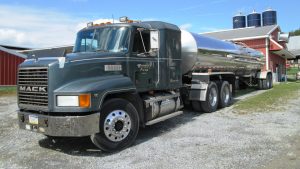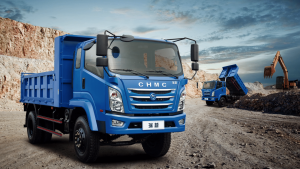Mini excavators, also known as compact excavators, have become an essential tool in construction, landscaping, and various other industries. These versatile machines offer substantial power in a compact frame, allowing them to maneuver through tight spaces, handle complex tasks, and provide efficiency in a range of applications. Understanding what makes mini excavators unique and valuable can help professionals and DIY enthusiasts make the most out of this powerhouse. Here’s a comprehensive overview of mini excavators, from their capabilities to best use practices and key considerations when choosing the right model for a job.
1. What is a Mini Excavator?
A mini excavator is a small, compact digging machine that typically weighs between 1 to 10 tons and is equipped with a backfill blade, a boom, and an attachment for digging. Unlike their full-sized counterparts, mini excavators are designed with size constraints in mind, making them ideal for small or restricted workspaces where larger equipment cannot access or would struggle to operate.
The mini excavator’s defining characteristics are its maneuverability, versatility, and ease of use. It can turn in confined spaces, making it particularly useful in urban construction, residential landscaping, and on properties where minimizing ground disturbance is important.
2. Applications of Mini Excavators
Mini excavators are renowned for their adaptability across various tasks and industries, including:
- Landscaping: In landscape construction, mini excavators are used for tasks such as digging ponds, creating terraces, and removing small trees or stumps.
- Utility Work: They are commonly employed in digging trenches for plumbing, sewer, and electrical lines in residential or small commercial settings.
- Demolition: Despite their small size, mini excavators are strong enough to handle small demolition projects, such as tearing down garages, sheds, or sidewalks.
- Agricultural Use: On farms, mini excavators can help with tasks like fence post digging, irrigation trenching, and land clearing.
- Roadside Work: With their compact form, mini excavators are ideal for repairing sidewalks, curbs, and drainage systems without obstructing traffic.
- Residential Projects: For DIY enthusiasts, mini excavators can be a time-saver for tasks like garden beds, patios, swimming pool digging, and even grading small plots of land.
3. Key Features and Attachments
Mini excavators are distinguished not only by their size but also by the range of attachments they can accommodate, making them incredibly versatile. Common attachments include:
- Buckets: Ranging from narrow trenching buckets to wide grading buckets, these are essential for various digging and earth-moving tasks.
- Augers: Ideal for drilling holes for posts, trees, and foundations.
- Hydraulic Hammers: Used for breaking up concrete, asphalt, and other solid materials in demolition.
- Thumbs: A hydraulic thumb attachment allows the excavator to grip objects securely, making it easier to pick up and move large debris or materials.
- Rippers: These attachments are ideal for breaking up hard soil or roots, making it easier to dig in tough conditions.
Each attachment expands the machine’s versatility, allowing operators to tackle a variety of projects with a single unit. Changing attachments is often straightforward, as most modern mini excavators are equipped with quick-attach systems that simplify the process.
4. Advantages of Using a Mini Excavator
The primary advantages of mini excavators are their compact design, ease of use, and lower operational costs compared to larger models. Key benefits include:
- Maneuverability: Mini excavators are designed to turn in tight spaces. They can pivot 360 degrees, which is ideal for working in confined areas like backyards, alleys, and small construction sites.
- Reduced Ground Impact: Due to their lighter weight, mini excavators are less likely to cause significant ground disturbance, which is crucial in areas where maintaining landscape integrity is essential.
- Lower Transportation Costs: Mini excavators can be transported on smaller trailers and are more fuel-efficient than full-sized excavators, reducing overall operational costs.
- User-Friendly Controls: Modern mini excavators are equipped with intuitive, easy-to-learn controls, making them accessible to new operators and DIY enthusiasts.
- Versatility: With the ability to swap out attachments, mini excavators can be tailored to suit the needs of each specific job, offering flexibility across a range of applications.
5. Considerations When Choosing a Mini Excavator
Not all mini excavators are created equal, so it’s important to consider several factors to ensure that you select the right model for your needs:
- Size and Weight: Mini excavators vary in size and weight. Models between 1-5 tons are suitable for light landscaping and DIY projects, while 5-10-ton models provide more power for commercial and construction tasks.
- Digging Depth and Reach: Consider the depth to which you need to dig. Different models offer varying boom lengths, so matching the machine to your job’s requirements is essential.
- Engine Power: Mini excavators come with different engine outputs, typically ranging between 10-40 horsepower. Higher horsepower is necessary for heavy-duty work but may not be required for smaller, residential tasks.
- Cab Design: Mini excavators come with either open or enclosed cabs. Enclosed cabs provide added comfort in cold or rainy conditions, while open cabs offer better visibility in tight spaces.
- Track Type: Tracks can be either rubber or steel. Rubber tracks are ideal for landscaping and residential projects where minimizing damage to the ground is important. Steel tracks are better suited to construction sites with uneven terrain.
- Hydraulic Flow and Attachment Capability: Make sure the mini excavator has the hydraulic flow to power the specific attachments you’ll use most frequently.
6. Operating a Mini Excavator: Safety and Best Practices
Operating a mini excavator, while generally user-friendly, still requires adherence to safety guidelines. Here are some essential safety practices to consider:
- Inspect Before Use: Regularly check the equipment for wear and tear, paying close attention to hydraulic lines, tracks, and the attachment systems.
- Stay Aware of Surroundings: Mini excavators are designed to operate in tight spaces, but operators should remain aware of people, structures, and other equipment nearby.
- Follow Load Limits: Overloading can destabilize the mini excavator, particularly when operating on uneven ground. Always respect the machine’s load capacity.
- Wear Safety Gear: Helmets, gloves, and steel-toe boots are basic safety requirements for any excavator operator, along with seatbelts when operating.
- Take Caution with Slopes: Mini excavators can become unstable on steep slopes, so avoid traversing at steep angles and opt for level terrain when possible.
7. Cost and Maintenance of Mini Excavators
The purchase price of a mini excavator typically ranges between $20,000 to $80,000, depending on brand, model, and features. For those who need the machine only occasionally, rental options are widely available, with daily rates ranging from $150 to $500.
Regular maintenance is crucial for maximizing the lifespan and efficiency of a mini excavator. Basic maintenance includes changing the oil, checking hydraulic fluid levels, cleaning filters, and inspecting the tracks. Most manufacturers provide recommended maintenance schedules, and many offer warranties to cover repairs.
8. Future Trends in Mini Excavators
The demand for mini excavators is expected to continue growing as industries seek efficient, environmentally friendly equipment for construction and landscaping. Innovations in electric mini excavators, for instance, are increasingly popular for urban projects where noise and emissions are regulated. Additionally, advancements in autonomous and remote-controlled mini excavators are in development, potentially revolutionizing how these machines operate.
Conclusion
Mini excavators have proven themselves as indispensable tools for both small-scale and specialized construction tasks. Their compact size, versatility with attachments, and ease of use make them a valuable investment for contractors, landscapers, and DIY enthusiasts alike. As the technology continues to evolve, mini excavators will only become more efficient, eco-friendly, and versatile, solidifying their role as compact powerhouses in various industries.




